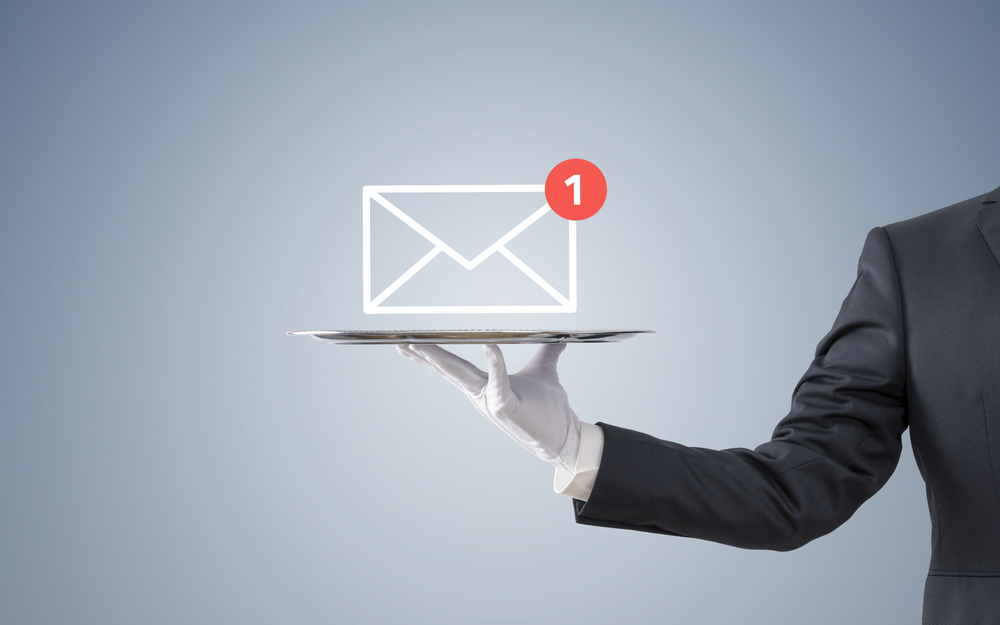Email, as one of the most extensively used digital communication channels, elevates communication to new heights. By 2023, it’s expected that there will be over 4.6 billion email subscribers worldwide.
As a result, the importance of email marketing for your business to impact your target audience should come as no surprise. Using artificial intelligence (AI) in your email marketing approach improves the impact on your target audience.
Businesses that utilize artificial intelligence to drive email marketing expect to expand by $1.2 trillion each year. Around 49% of marketers have already started using automation in their email marketing campaigns.
But how exactly does AI do this? This article will discuss how AI is revolutionizing email marketing and how you can incorporate AI into your email marketing strategy. Let’s dig in.
How AI is changing the face of email marketing

The arrival of AI has transformed marketing in recent years, and it will continue to do so as it grows and advances.
One of the most potent forms of marketing, email marketing, appears to be benefiting the most from the introduction of AI into marketing. AI has revolutionized email marketing, making it more effective.
Here are a few ways AI is doing just that:
Personalized Emails
Personalization is a powerful tool for motivating people to take action in today’s society. Emails follow the same pattern. Only if an email feels personal to the recipient is it read and clicked on.
Fortunately, AI can analyze and predict human behavior to the point where it understands your customers’ goals. As a result, marketers can tailor emails to the interests of the recipient. The email can be more effective as a result of this.
Email Retargeting
Customers frequently abandon their shopping carts when purchasing online. That could be for several reasons, but what’s more crucial for marketers is to figure out how to get them back to finish the transaction.
That’s known as customer retargeting. Email is an excellent medium to retarget your customers, but the process can take time and effort. The good news is that you have their data and can use AI to examine it. Retargeting these clients will be easier and more effective as a result.
Customer Tracking
By now, you’ve probably heard the term “predictive analysis.” That has to do with using AI to evaluate massive amounts of data and then forecast customer behavior based on the results. That allows marketers to use AI to forecast what customers want or need based on previous data.
For instance, AI can help you answer questions like, “What is the likelihood that my customers will buy my goods in the next month?” or “What is the estimated total value of clients who will purchase my product in the coming month?” You can include that data in emails to increase sales.
Automated Newsletters
There are AI platforms entirely dedicated to the creation of hyper-personalized “smart” newsletters. These are automated emails that feature material that has been hand-curated for every reader, drastically increasing subscriber engagement. With typical automation methods, this level of personalization was previously unattainable.
In other words, AI appears to be transforming email marketing for the better. It’s up to you how you can leverage it to improve your campaigns.
Ways to Incorporate AI into your email marketing campaigns

Now that we’ve seen the importance of AI in email marketing campaigns, let’s see some ways we can integrate AI into them:
Segment your email list effectively
Today, personalization is impossible without segmentation.
In addition to increasing client involvement, segmented emails increase open rates, click-through rates, and conversions. However, the success of your segmentation will depend on how well you find the hidden gems in your data.
Machine learning has made segmenting easier with algorithms that automatically discover segments in your data and select one with the most promise.
For example, machine learning could help determine which age group has the highest conversion rate if your target market covers different age groups. Even a simple division like this can help you increase conversions in hours.
Machine learning segmentation models such as RFM (recency, frequency, monetary) segmentation are another example. These segments are not only valuable, but they also save time and money that you can put to better use in marketing initiatives.
Here’s an example of an RFM chart:
Because frequency and monetary value influence a customer’s lifetime value, and recency influences retention, these RFM measures are crucial indications of a customer’s behavior.
Create Hyper-Personalized Newsletters
It’s no exaggeration to say that AI can assist you in gaining subscribers quickly. Personalization at scale is a crucial strength of AI. There are AI platforms dedicated entirely to creating hyper-personalized “smart” newsletters that enhance subscriber engagement considerably.
Each user receives a newsletter tailored to their interests depending on their interactions with the company. AI can then process data and provide insight into which messages and content provide the best engagement and performance based on previous email interactions.
AI can also scan through millions of times in your CRM data to find highly relevant keywords. You can utilize these keywords in your content or subject lines to elicit a specific response from your recipients.
It’s a level of personalization that old automated solutions couldn’t provide.
There is, however, one condition. Getting more subscribers ultimately boils down to sending better newsletters. You’ll attract more subscribers if you provide more value in the form of high-quality material.
How do you provide value? Here are a few ways.
Quality Over Quantity
While some marketing experts insist on bombarding prospects with emails daily, it might backfire on you, especially if you hyper-personalize your email templates. Sending personalized emails might desensitize the recipient and remove the “wow” factor from your campaign.
How do you determine the ideal frequency for sending hyper-personalized marketing emails? You can use AI to monitor open email rates on certain days of the week. You can go even more granular and determine when your subscribers open specific types of emails.
For example, sending an email titled “What to expect this week” won’t make much sense on a Friday when most workers are about to wrap up their working weeks. On the other hand, sending special offers on Fridays might generate more click-throughs.
Using these insights, you can segment your audience according to their behavioral patterns and send quality marketing content at just the right time and frequency.
Test
Even if you use AI to hyper-personalize your marketing emails, you still need to test which versions of your emails are performing the best. Testing several versions of your newsletter is one approach to figuring out your focus for the best results.
For instance, you can use AI tools to create heat maps of your email templates. These heatmaps will show you the parts of your email that attract reader attention and reveal elements that you can change and tests, such as the call-to-action (CTA) button or video links.
Insights like these can help take a lot of the guesswork out of A/B testing and make the process faster and more productive.
Improve Email Deliverability

Superior email deliverability is the key to getting a solid ROI and high performance from your email marketing. It’ll have a cascading impact on your email deliverability if your email campaigns focus on a specific target group with personalized content persuasive enough to convert readers into buyers.
There are various distinct methods to increase your email’s reach, and AI can improve most of them.
First off, reorganize your email marketing initiatives. AI-powered systems may break down your marketing campaign into hundreds of sub-campaigns using historical data. They can then structure and deliver them to maximize inbox delivery.
Second, unopened emails indicate to email providers that your content is not worth reading, leading them to mark it as spam.
To prevent this from happening, you can use AI-powered tools to identify subscribers who have not opened your emails for some time and stop your email marketing software from emailing these subscribers.
Also, AI can help you clean up email databases. It can improve deliverability by deleting out-of-date contacts. You may also integrate AI into platforms like LinkedIn to develop rich subscriber lists that include details such as locations, companies, and positions.
These lists will allow you to create and send relevant content to your subscribers.
Send Marketing Emails at the Right Time

AI algorithms eliminate the guesswork by recommending the optimum times to send emails based on your subscribers’ data.
For example, AI discovered that the majority of your subscribers check emails first thing in the morning. The information obtained allows you to fine-tune your email distribution timetable. Isn’t that incredible?
People like receiving emails when they are most likely to check their mailbox rather than at random times. Instead, They would open an email received at 10 a.m. rather than one sent at 2 a.m. Even if you’re in a challenging city or country, you should consider that your user base is spread out.
This strategy works on a psychological level, in which the user becomes accustomed to watching a brand’s recurring emails at a specific hour. If customers expect you to send emails simultaneously every week, they may develop a habit of opening up and engaging with them.
You may notice that not all customers complete purchases when they add your products to their carts. Email retargeting is a powerful tool for increasing sales and decreasing shopping cart abandonment.
You can fine-tune your remarketing campaign using AI-powered tools to reduce shopping cart abandonment and increase sales income. After studying their activities, AI may send retargeting emails to various clients at the most optimal time.
Some clients may respond better to an email delivered an hour after leaving your website, while others may need to wait a day or two before making a purchase. AI can recognize these distinct types of clients and deliver your remarketing emails.
All of this will only work, of course, if your retargeting email follows best practices.
Here are some of those best practices:
- Collect customer data to build an email list
- Set your objectives
- Segment your audience into categories like cart status and demographics depending on your goals
- Plan your email sequence. It’s best to use an email marketing calendar
- Create eye-catching emails with catchy subject lines
- A/B test everything
Even though many marketing methods allow you to send relevant information to relevant audiences, email retargeting is one of the favorites. Regardless of the campaign you run, AI can help you determine when the best time to send your emails for the best results.
Conclusion
AI is changing email marketing for the better and can give you a boost in sales and revenue, which will further make the processes more faster and efficient.
By using AI-powered email marketing software, you can improve the effectiveness of your email campaigns while reducing the time you spend on them.
AI enables you to send subscribers more personalized, targeted, and personalized emails. It’s one of the most productive methods for delivering high-quality, intelligent campaigns. It also helps synchronize and create appealing email campaigns using a combination of automation and specialized features.
As a result, incorporating AI technology is advantageous for achieving remarkable growth and a worthwhile investment for many years to come.